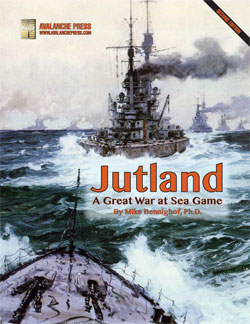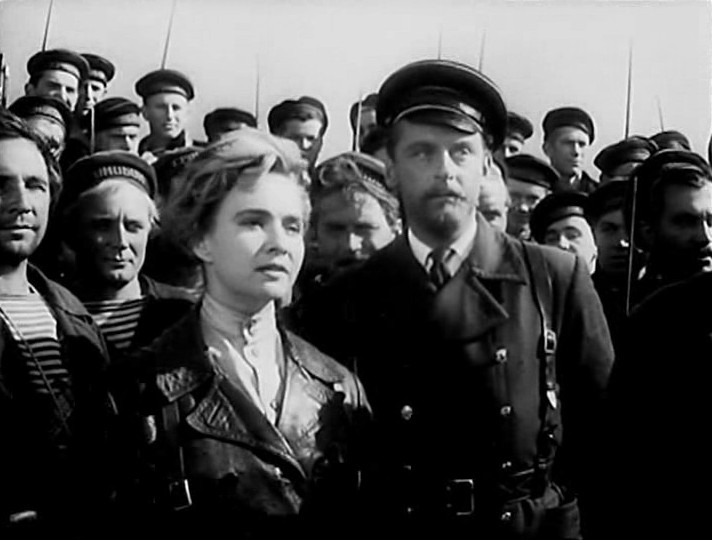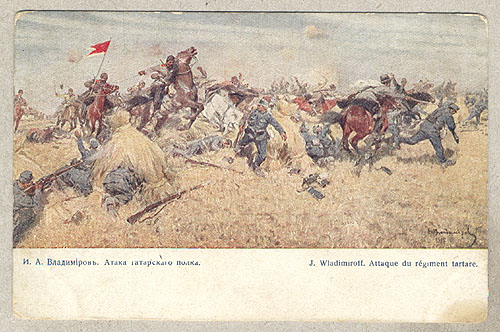Red Sailors, Part Three
by Mike Bennighof, Ph.D.
May 2022
The story began in Part One, and continued in Part Two.
 Sailors soon became involved in the Helsinki, Kronstadt and Reval soviets, but were not a majority ln any of them. Lenin’s return in April angered most sailors because of his German connection. Leaders of the Socialist Revolutionary-dominated ship committees on the dreadnoughts Petropavlovsk and Sevastopol seriously considered attacking and sinking the pro-Bolshevik Respublika (the former Imperator Pavel I). A Bolshevik party worker aboard Petropavlovsk was hurled overboard by the sailors. Sailors soon became involved in the Helsinki, Kronstadt and Reval soviets, but were not a majority ln any of them. Lenin’s return in April angered most sailors because of his German connection. Leaders of the Socialist Revolutionary-dominated ship committees on the dreadnoughts Petropavlovsk and Sevastopol seriously considered attacking and sinking the pro-Bolshevik Respublika (the former Imperator Pavel I). A Bolshevik party worker aboard Petropavlovsk was hurled overboard by the sailors.
Yet after the German-support scandal blew over, Bolshevik influence steadily grew among the sailors since they were the only party untainted by association with the despised Provisional Government. Young sailors became especially dissatisfied with the Mensheviks and Left Socialist Revolutionaries who dominated the ship committees, and the Bolsheviks moved effectively to exploit this opportunity. Leaders like Dybenko (prominent Bolshevik Alexandra Kollontai’s lover, some 18 years her junior) on Imperator Pavel I and, after a tour at the front with the Naval Infantry, the transport Schcha, were extremely active within the fleet committee and consistently out-maneuvered the majority Left Socialist Revolutionaries and Mensheviks as did Khovrin, also a rating on Pavel I. The battleships became the centers of discontent - Khovrin claimed over half of Respublika’s crew as party members.
Most officers did little to stop political activity. Admiral Aleksandr Maksimov, the new fleet commander, was very popular with the rank and file, having defended his men against arrest in pre-war days. He also had a high professional reputation as a mine warfare expert following the Russo-Japanese War. Maksimov required officers to use the polite form of address with their men instead of the demeaning familiar form, while officers were to be called "Mr. Lieutenant" and so on instead of "Your Highness." He also permitted smoking in the street, beards and longer hair. The fleet central committee, Tsentrobalt, was set up in April at his instigation.

Dybenko and Kollontai, from real life ...
While Maksimov was popular with the rank and file, most officers held the opposite opinion. The new commander was called the "Red Admiral" and accused of decorating his uniform with red ribbons. Another popular admiral, Dmitrii Verderevsky, more acceptable to the officer corps, was appointed second-in-command with the understanding that he would be promoted to the top job after a decent interval had passed. After considerable intrigue, Maksimov was canned by Army commander-in-chief Gen. Alexei Brusilov in June and replaced by Verderevsky.

. . . and from the movie Optimistic Tragedy (1963).
Maksimov was seen as too lax in disciplining the sailors, and insulted many in the officer corps by reducing their privileges. The final straw came with the bizarre declaration by the Kronstadt Soviet of an independent republic of Kronstadt. The crew of Petropavlovsk mutinied when Maksimov was fired, but the admiral restrained the sailors.
While the end of Romanov rule caused restless agitation in the Baltic Fleet, it was a different story in the Black Sea.
"In the Black Sea Fleet the news of these events made no particular impression, possibly because we received them after a long delay . . ." Kolchak testified shortly before he was executed. "It was merely rumored that there had been disorders in the Baltic Fleet, that Nepenin and other officers had been murdered."
Kolchak gave permission for revolutionary committee meetings ashore, and his sailors apparently obeyed his summons to return from then whenever needed for missions.
“It went on this way for the first few weeks, so long as nobody came to us from the outside and we were left to ourselves,” Kolchak testified. “Then all sorts of deputations from the Baltic Fleet began to visit us. . . . There appeared the first sign of disintegration, which made rapid headway among the crews . . . I was extremely worried by the tendency and course adopted by the Black Sea Fleet under the influence of treason, propaganda and the appearance of unknown persons.”
Most Black Sea ships, even the ancient battleships, took part in a constant series of operations against the Turks, giving their crews much less time for political activities. Kolchak administered the oath of loyalty to the Provisional Government to his men and had the inscription “God Save the Tsar” removed from Sevastopol harbor.
A new regime brought a series of new ship names. Tsarist handles were tossed out in favor of more revolutionary or egalitarian ideals. Imperator Pavel I became Respublika; Tsesarevich was rechristened Grazhdanin (Citizen); Imperatritsa Ekaterina II became Svobodnaya Rossiya (Free Russia); Imperator Alexander III became Volya (Freedom); Pantelimon (the former Potemkin) became Boretz na Svobodu (Standard Bearer of Freedom) and the ancient training battleship Imperator Alexander II was renamed Zaria Svobody (Star of Freedom).
In the Baltic Fleet, the ship committees supported the Provisional Government’s last-gasp June offensive and the accompanying Liberty Loan drive. Sailors from Reval flocked to join the city’s volunteer "Battalion of Death" (members took a vow to never be taken alive) that left for the front on 22 June. But exposure of the so-called Miliukov Note, in which the Provisional Government’s foreign secretary promised the Western Allies that Russia would continue the war and sought annexation of Galicia and the Turkish Straits, did not go over well in the fleet coming so soon after Maksimov’s firing,
On 21 June, Petropavlovsk’s committee - apparently over Bolshevik objections - issued a 10-point ultimatum calling for abolition of the State Duma and State Council, imprisonment of the Tsar at Kronstadt and full publication of all secret treaties. If these demands were not met within 24 hours, the battleship would steam up the Neva and destroy the city. The Helsinki sailors’ committee dissuaded the battleship men from blasting the capital. It’s not likely that the massive dreadnought could have been navigated up the treacherous, shallow Neva, but the members of the Provisional Government didn’t know that and were definitely frightened. Verderevsky was ordered to block the dreadnought with submarines and sink her if she sailed, but the new fleet commander refused to fire on his comrades. The ship stayed in harbor, but the Provisional Government had no success in its efforts to arrest committee leaders on the dreadnought and on Respublika.
The fleet was now thoroughly radicalized. And the Provisional Government had to be very aware that, besides the 80,000 trained men who might be thrown into street fighting – the Russian Navy gave all of its recruits basic infantry training – the dreadnoughts did possess the firepower to level Petrograd. Yet while sailors may have been unhappy with Russia’s government, they stayed surprisingly loyal to their calling. Few deserted during 1917.
Soon after the Petropavlovsk ultimatum, the “July Days” broke out in Petrograd. A government crisis over a failed, bloody and foolish offensive in Galicia sparked demonstrations by soldiers and workers over food shortages. Several thousand Kronstadters - the number of sailors among them is unclear - commandeered small craft and went to march alongside them. Sailors holding out in the Peter and Paul Fortress were the last group to surrender. They were the most conspicuous single group, and were singled out for special condemnation in the aftermath of the riots.
Later in July, the revolutionary crews passed apologetic resolutions and once again pledged their loyalty to the Provisional Government. However, the Petropavlovsk and Slava ship committees would not let a committee of inquiry aboard.
In September came Gen. Lavr Kornllov’s ill-fated attempt to install himself as a military dictator. The key move was the advance of the III Cavalry Corps on Petrograd, spearheaded by the Caucasian Native cavalry or “Savage” Division, a unit drawn from Caucasian tribesmen who, legend had it, preferred to ride into battle naked.

The “Savage Division” attacks the Austrians.
Sailors from the Kronstadt depot had served alongside the Savage Division at the front as part of the Baltic Fleet’s Naval Infantry, a concept abandoned when army commanders complained that the sailors were so unruly they infected neighboring regiments. Veterans of the naval rifle company attached to the Savage Division were sent to agitate among their former comrades and along with a delegation of Muslim delegates to the Petrograd Soviet successfully diverted the unit from Kornilov’s control.
Kornilov apparently thought the fleet would bombard Helsinki in case of a Finnish rising against him. Instead, the battleships sent word to the Cossacks of the I Cavalry Corps stationed in the Finnish capital that they would open fire on their barracks and on the railway station should the cavalry attempt to head for Petrograd. The Cossacks stayed put and Kornilov lost the northern wing of his offensive. In addition, four destroyers – better able to wend their way up the Neva - went to Petrograd to provide artillery support against Kornilov.
In the wake of the Kornilov coup, the fleet’s central committee, Tsentrobalt, asked ship committees to make officers sign a loyalty oath to the Provisional Government. Four young officers on Petropavlovsk refused; they were taken ashore and shot.
With Kornilov defeated, the Baltic sailors now easily accepted the idea of fighting counter-revolution. Their chance to defend the revolution at sea was even then approaching from the south.
The story concludes in Part Four
Order Jutland second edition here.
Please allow an extra three weeks for delivery.
Sign up for our newsletter right here. Your info will never be sold or transferred; we'll just use it to update you on new games and new offers.
Mike Bennighof is president of Avalanche Press and holds a doctorate in history from Emory University. A Fulbright Scholar and NASA Journalist in Space finalist, he has published a great many books, games and articles on historical subjects; people are saying that some of them are actually good.
He lives in Birmingham, Alabama with his wife, three children, and his Iron Dog, Leopold. Leopold can swim but is not a revolutionary.
Want to keep Daily Content free of third-party ads? You can send us some love (and cash) through this link right here.
|
